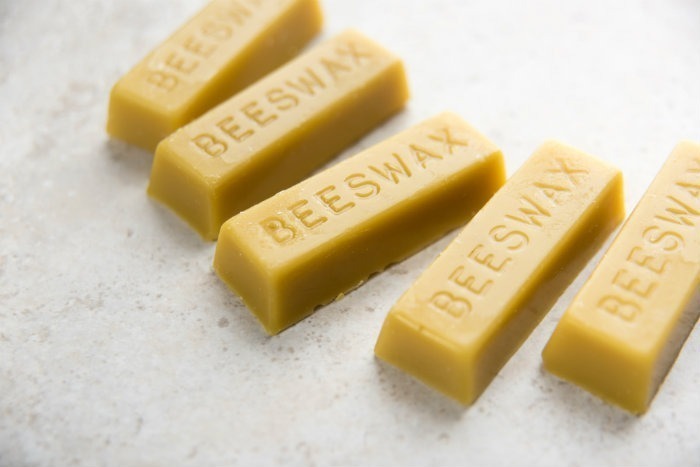6 Simple Ways to Waterproof Different Kinds of Fabric

Make sure to like Living Green and Frugally on Facebook, Shop at amazon to help support my site and explore our PINTEREST BOARDS for innovative ways you can become self-sufficient.
Waterproofing fabric can extend the life of your outdoor gear, protect your belongings from moisture, and keep you dry during rainy days. Whether you’re dealing with a raincoat, tent, or backpack, waterproofing fabric can be a simple and effective solution. Here are six straightforward methods to waterproof different types of fabric.
Silicone Spray: Silicone spray is a quick and easy way to waterproof fabric. It forms a protective barrier that repels water, keeping your fabric dry. To apply silicone spray, follow these steps:
- Clean the fabric: Use a mild detergent and water to clean the fabric thoroughly. Allow it to dry completely before applying the spray.
- Test in a small area: Before applying the spray to the entire fabric, test it on a small, inconspicuous area to ensure compatibility.
- Spray evenly: Hold the silicone spray can about 6-8 inches away from the fabric and spray evenly, covering the entire surface.
- Let it dry: Allow the fabric to dry completely before using it. Reapply the spray as needed for maximum waterproofing.
Wax: Waxing fabric is a traditional method of waterproofing that has been used for centuries. Beeswax or paraffin wax can be used for this purpose. Here’s how to wax fabric:
- Prepare the wax: Grate the wax into small pieces for easier melting.
- Melt the wax: Use a double boiler or a heat-safe container placed in a pot of simmering water to melt the wax.
- Apply the wax: Use a brush or sponge to apply the melted wax evenly to the fabric. Make sure to cover the entire surface.
- Heat set the wax: Use a hairdryer or heat gun to heat set the wax into the fabric. This helps the wax penetrate the fibers for better waterproofing.

Waterproofing Sprays: There are many commercial waterproofing sprays available on the market that are specifically designed for different types of fabric. These sprays are easy to use and provide long-lasting protection against water. To use a waterproofing spray:
- Read the instructions: Follow the manufacturer’s instructions carefully for the best results.
- Test in a small area: Before applying the spray to the entire fabric, test it on a small, inconspicuous area to ensure compatibility.
- Spray evenly: Hold the can about 6-8 inches away from the fabric and spray evenly, covering the entire surface.
- Let it dry: Allow the fabric to dry completely before using it. Reapply the spray as needed for maximum waterproofing.
Polyurethane Sealant: Polyurethane sealant is a durable and long-lasting waterproofing option for fabric. It creates a flexible and protective barrier that repels water effectively. Here’s how to use polyurethane sealant:
- Clean the fabric: Use a mild detergent and water to clean the fabric thoroughly. Allow it to dry completely before applying the sealant.
- Apply the sealant: Use a brush or roller to apply the polyurethane sealant evenly to the fabric. Make sure to cover the entire surface.
- Let it dry: Allow the sealant to dry completely according to the manufacturer’s instructions before using the fabric.
Gore-Tex Repair Kit: Gore-Tex is a waterproof and breathable fabric commonly used in outdoor gear. If your Gore-Tex fabric becomes damaged or loses its waterproofing, you can use a Gore-Tex repair kit to fix it. These kits typically contain patches and adhesive designed specifically for Gore-Tex fabric. Follow the instructions included in the kit for best results.
View this post on Instagram
Homemade Beeswax Waterproofing: Using beeswax is an excellent natural alternative to commercial waterproofing products. Beeswax provides a protective barrier that repels water while still allowing the fabric to breathe. Here’s how to make and apply homemade beeswax waterproofing:

- Melt the ingredients: In a double boiler or a heat-safe container placed in a pot of simmering water, melt the beeswax pellets. If using, add a small amount of pine resin for added durability and jojoba oil for flexibility. Stir the mixture until everything is well combined.
- Prepare the fabric: Clean the fabric thoroughly with mild detergent and water, then allow it to dry completely.
- Apply the mixture: Using a brush or sponge, apply the melted beeswax mixture evenly to the fabric. Make sure to cover the entire surface, paying extra attention to seams and stitching.
- Heat set the wax: Use a hairdryer or heat gun to heat set the beeswax into the fabric. This helps the wax penetrate the fibers for better waterproofing.
- Reapply if necessary: Depending on the fabric and its intended use, you may need to apply multiple coats of beeswax for optimal waterproofing. Repeat the process until you achieve the desired level of water resistance.
Waterproofing fabric is a simple and effective way to protect your belongings from moisture and extend their lifespan. Whether you choose silicone spray, wax, waterproofing sprays, polyurethane sealant, a Gore-Tex repair kit, or homemade beeswax waterproofing, make sure to follow the instructions carefully for the best results.
With these six methods, you can waterproof different kinds of fabric and enjoy outdoor activities without worrying about getting wet.